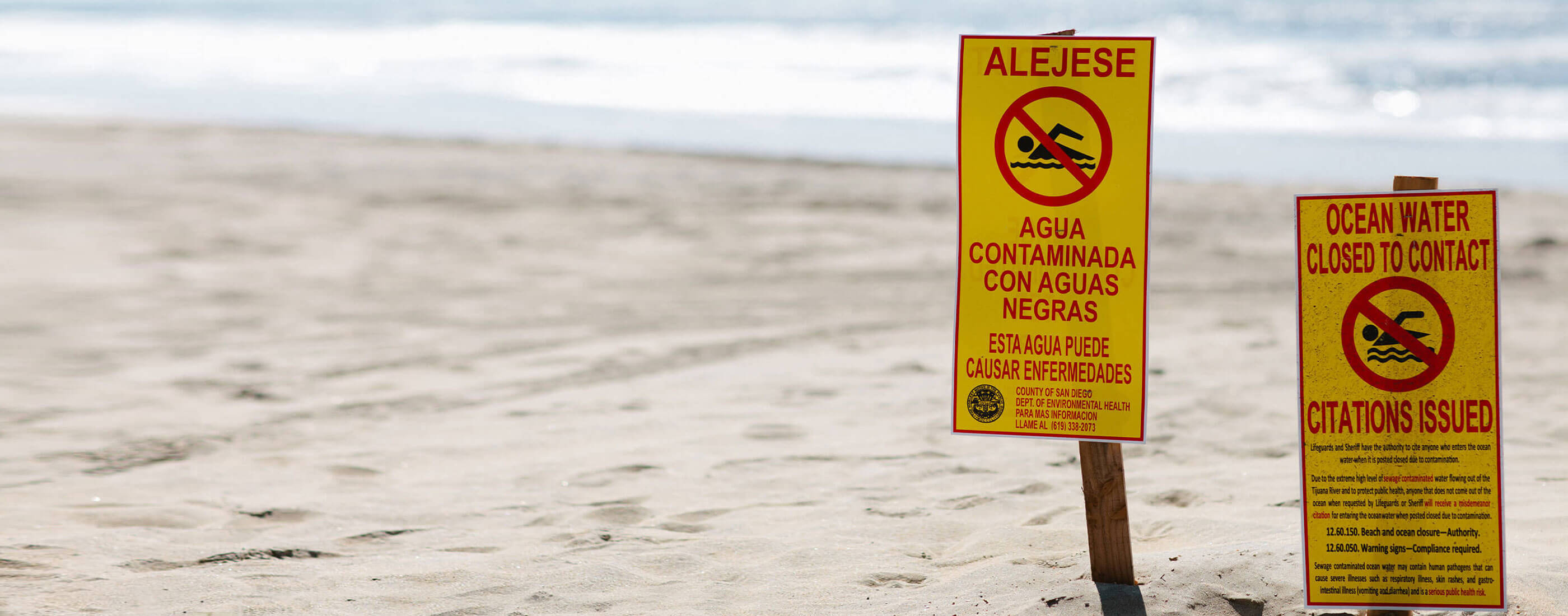
Stop Sewage Pollution
The Threats
Sewage spills and failing wastewater infrastructure threaten coastal water quality by discharging raw and under-treated sewage into local waterways and the ocean. Sewage can contain bacteria, viruses & parasites that make people sick with gastro-intestinal symptoms, rashes, flu-like symptoms, skin and eye infections and worse! Sewage discharges also pollute waterways with excess nutrients that wreak havoc on coastal ecosystems by fueling harmful algal blooms that put human health at risk, cause fish kills and smother coral reefs.
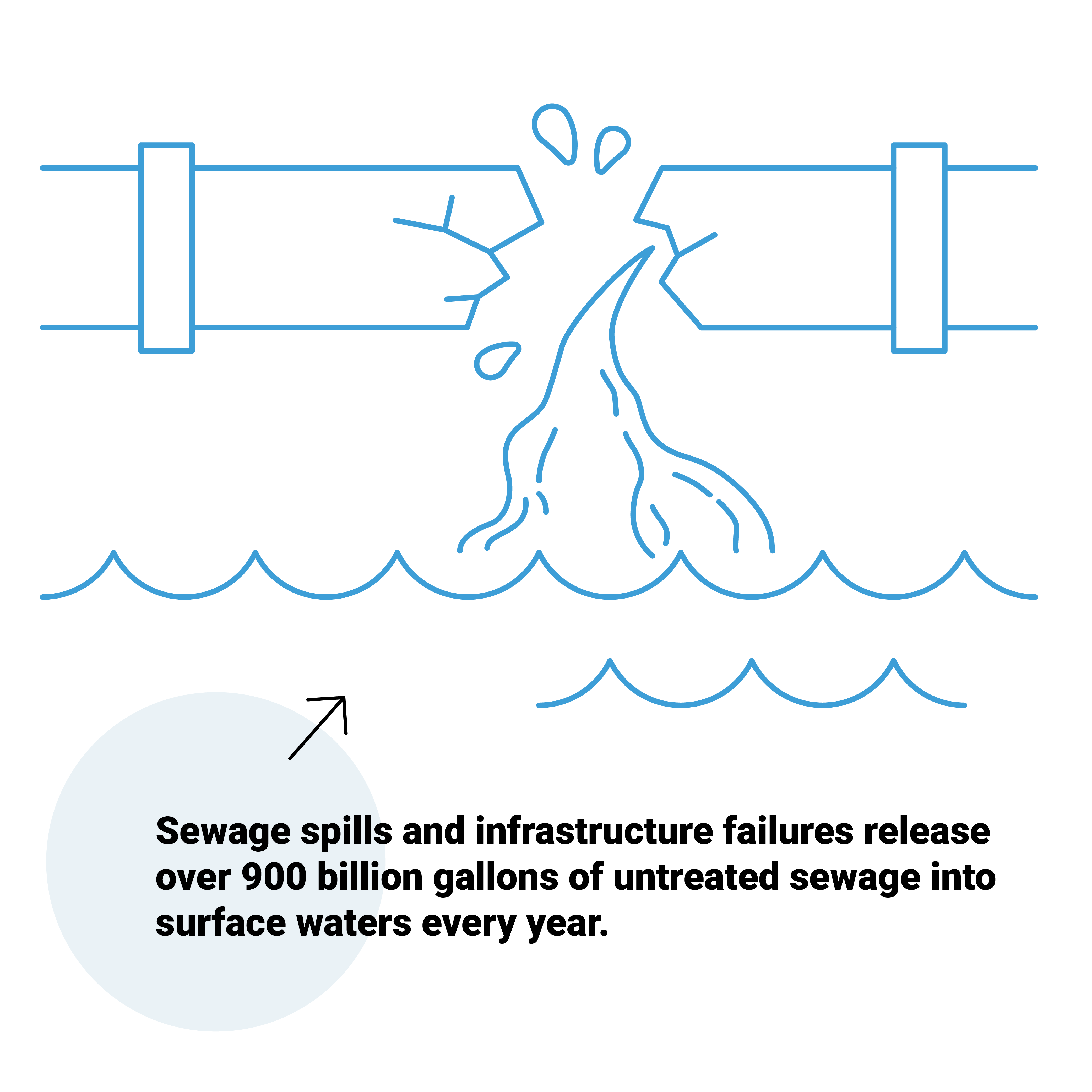
How does sewage pollution get to the beach?
Sewage Spills & Infrastructure Failures
Aging sewers, nearing 100 years old in many cities, are overwhelmed and failing under stress caused by decades of neglect, growing populations and climate change. This results in frequent infrastructure failures across the U. S. - such as line breaks, pump failures, and overflows - that release raw and under-treated sewage into our coastal environment. Significant investments are needed in order to fix and upgrade America’s aging sewage infrastructure. Learn more about how separate sewer systems and combined sewer systems fail and discharge untreated sewage into coastal watersheds.
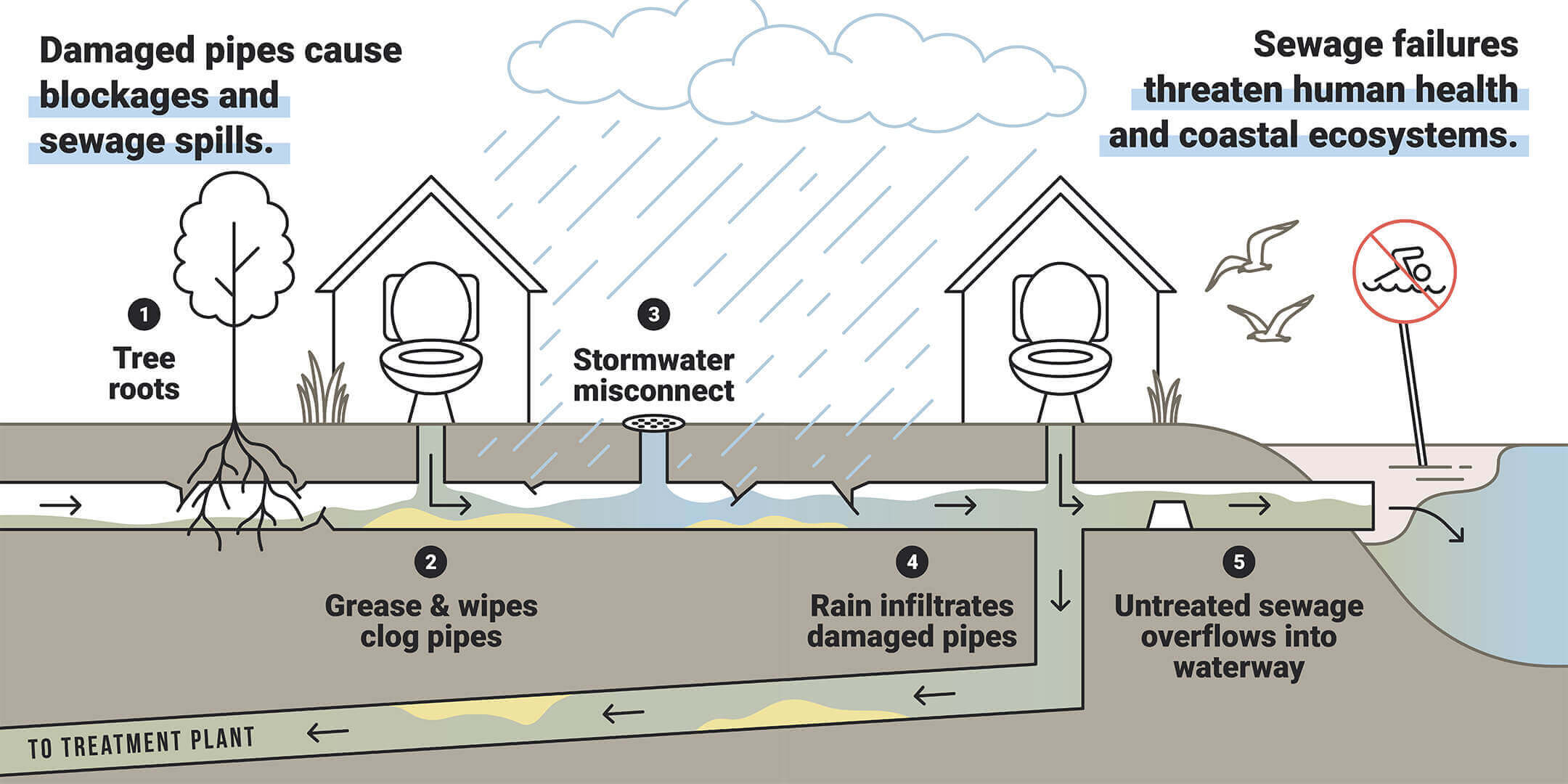
Cesspools & Septic Systems
Cesspools and standard septic systems do not adequately treat sewage and instead allow household waste to leach into ground and surface waters. Local flooding conditions caused by rising sea levels and extreme weather events makes this situation even worse, yet approximately 25% of U.S. households are still serviced by these outdated systems. This percentage rises to nearly 50% in some states, especially in rural areas. Connections to sewers and other advanced wastewater treatment systems are needed in order to stop the flow of pathogens and nutrient pollution into local waterways and to reverse the human health and ecosystem damage caused by these systems in many communities. Learn more about how Cesspools and Septic Systems pollute coastal waters.
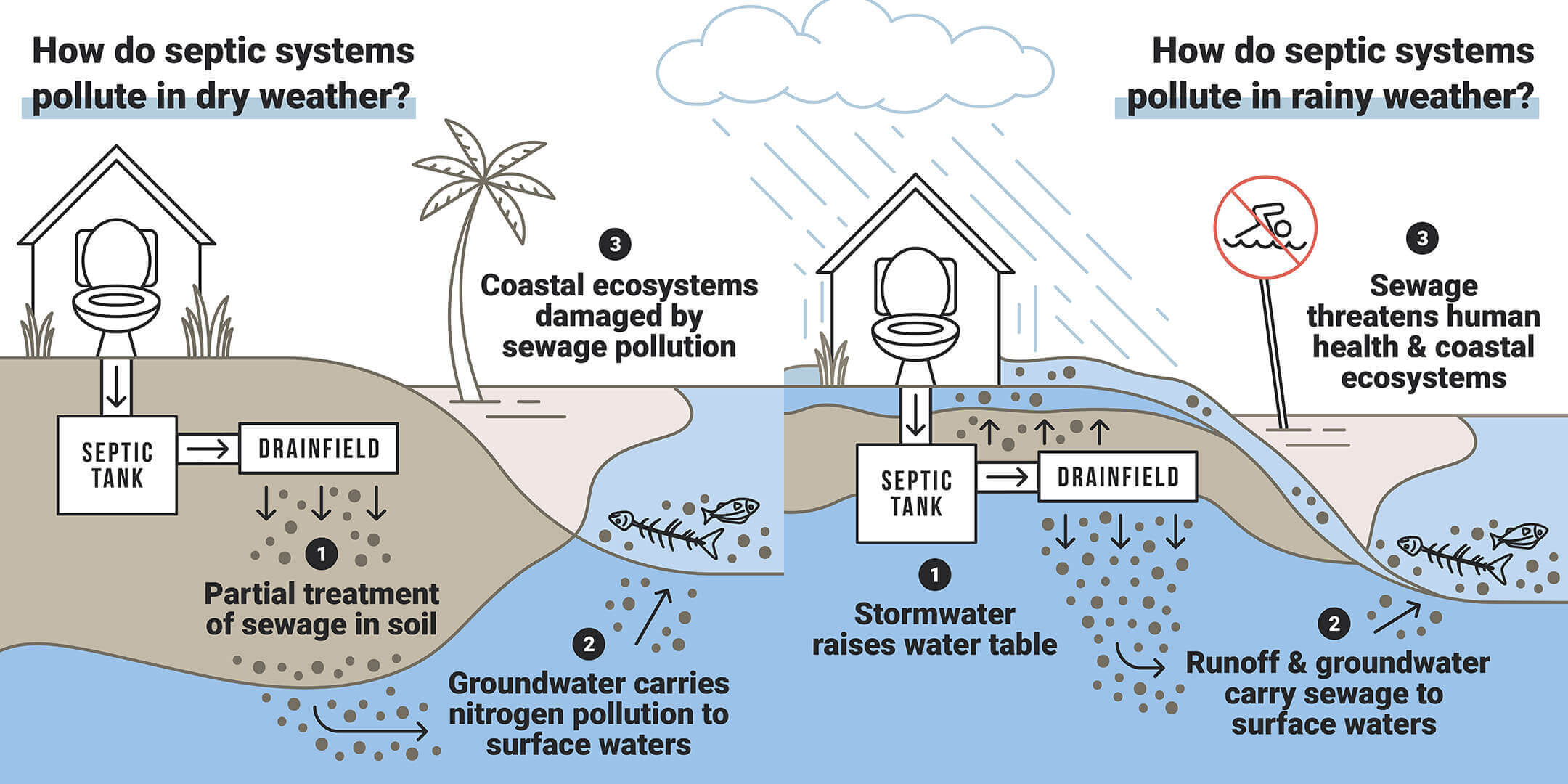
Stormwater & Urban Runoff
U.S. waterways are threatened by the flow of 10 trillion gallons of untreated stormwater runoff every year. Instead of soaking into the ground, rain falling on hard surfaces like rooftops, roads and parking lots, becomes runoff that carries pollution down to local waterways and the beach. Stormwater also overwhelms sewers causing them to fail and to discharge raw and untreated sewage. In areas with cesspools and septics, rising groundwater levels during flooded conditions cause these systems to leach sewage into stormwaters. Sea level rise and extreme weather events associated with climate change exacerbate this already critical situation. Learn more about the impacts of climate change on our wastewater infrastructure.
Better management of stormwater, by encouraging rain to soak into the ground through green infrastructure and low impact development practices is needed to reduce the impacts of sewage and polluted runoff in coastal communities.
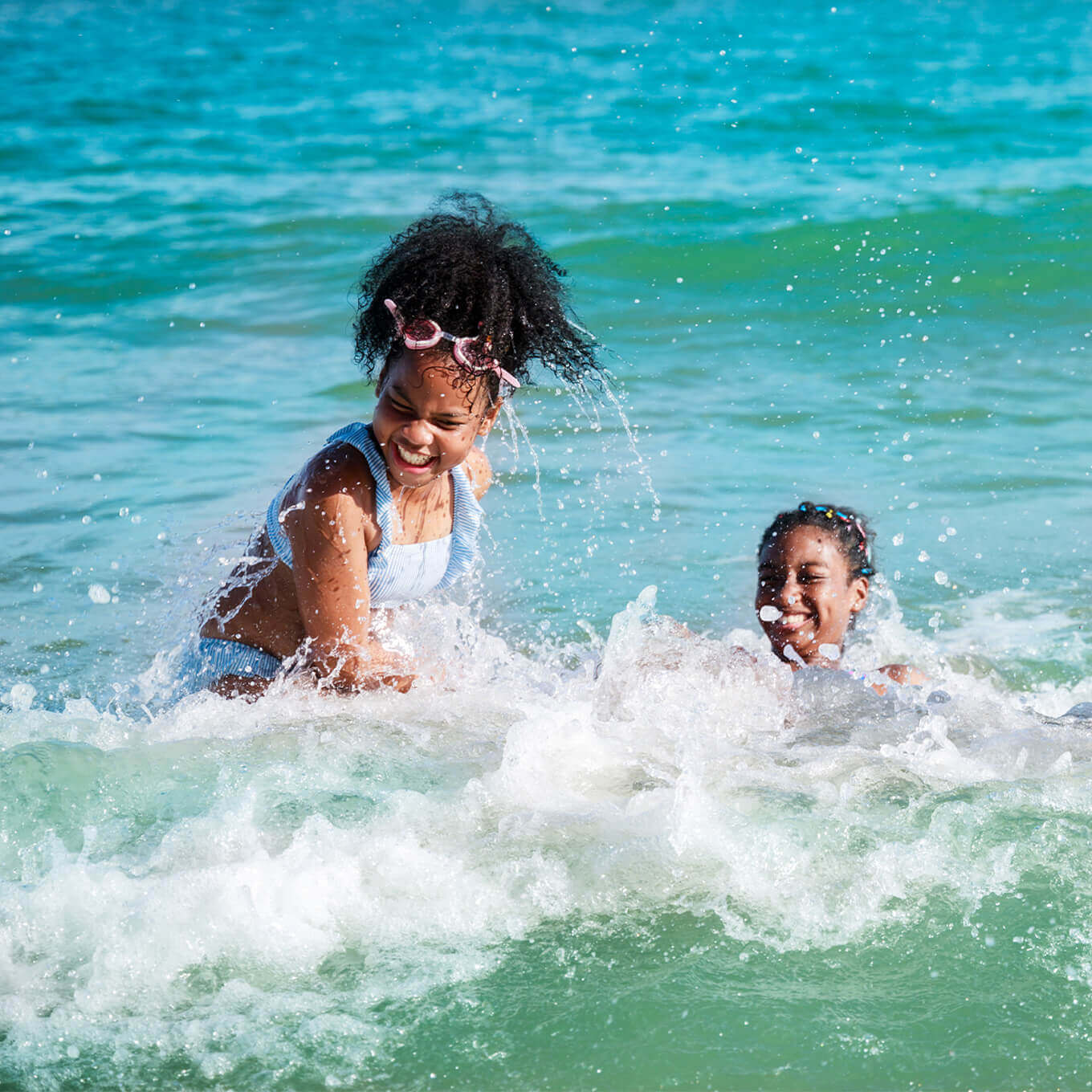
Pollution Solutions
The Surfrider Foundation believes that everyone deserves clean water to swim, surf and recreate in. To protect water quality along our coasts, we are working to ensure that all sewage in the United States is adequately collected and treated to protect public health and the environment. Our approach involves:
- Robust water quality monitoring and public notification
- Raising awareness of water pollution problems
- Advocating for solutions
- Legal action to address noncompliance issues
Blue Water Task Force
With over 50 chapter-led labs nationwide, Surfrider volunteers are measuring bacteria levels at nearly 500 ocean, bay, estuary and freshwater sampling sites across the country. The Blue Water Task Force is providing critical information to inform safe recreation and raise awareness of pollution problems. See where we are testing and view our data here.
Blue Water Task Force
With over 50 chapter-led labs nationwide, Surfrider volunteers are measuring bacteria levels at nearly 500 ocean, bay, estuary and freshwater sampling sites across the country. The Blue Water Task Force is providing critical information to inform safe recreation and raise awareness of pollution problems. See where we are testing and view our data here.
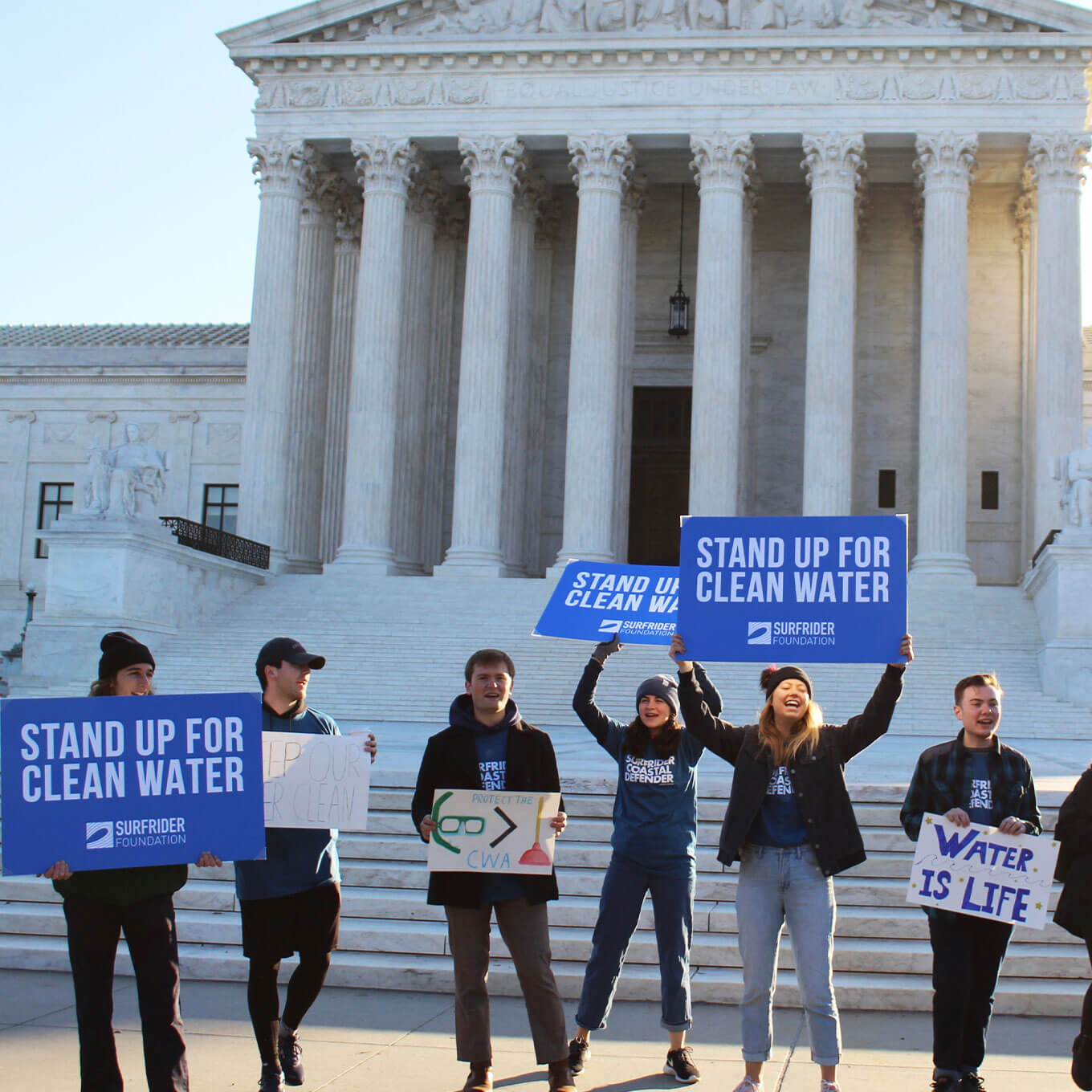
Our Campaigns
We are running advocacy campaigns at the federal, regional, state and local levels to protect public health and clean water for all people.
Federal
BEACH Act: Support federal funding for beach water quality monitoring and public notification programs through the EPA’s BEACH Act Grants program.
Clean Water State Revolving Fund: Stop sewage spills at the beach by securing increased federal funding for wastewater infrastructure improvement projects.
View all our water quality campaigns here or read an overview of our efforts in our Clean Water Report
Resources
Stop Sewage Pollution Video Series on Vimeo
- Full feature film (7:24 running time)
- Social media cut (60 sec running time)
- Florida cut
- Hawaii cut
Wastewater Infrastructure Animations
Coastal Blogs, Infographics, & Articles
- Cesspools
- Sewer Spills & Failures
- Septic Systems
- Combined Sewer Overages (CSOs)
- Climate Change Impacts on Infrastructure
- Personal actions to Stop Sewage Pollution
- In-depth Articles on Wastewater Infrastructure and Sewage Pollution on Beachapedia
Ways To Get Involved
Volunteer
Join our network and help us tackle the issues that face our ocean, waves and beaches.
